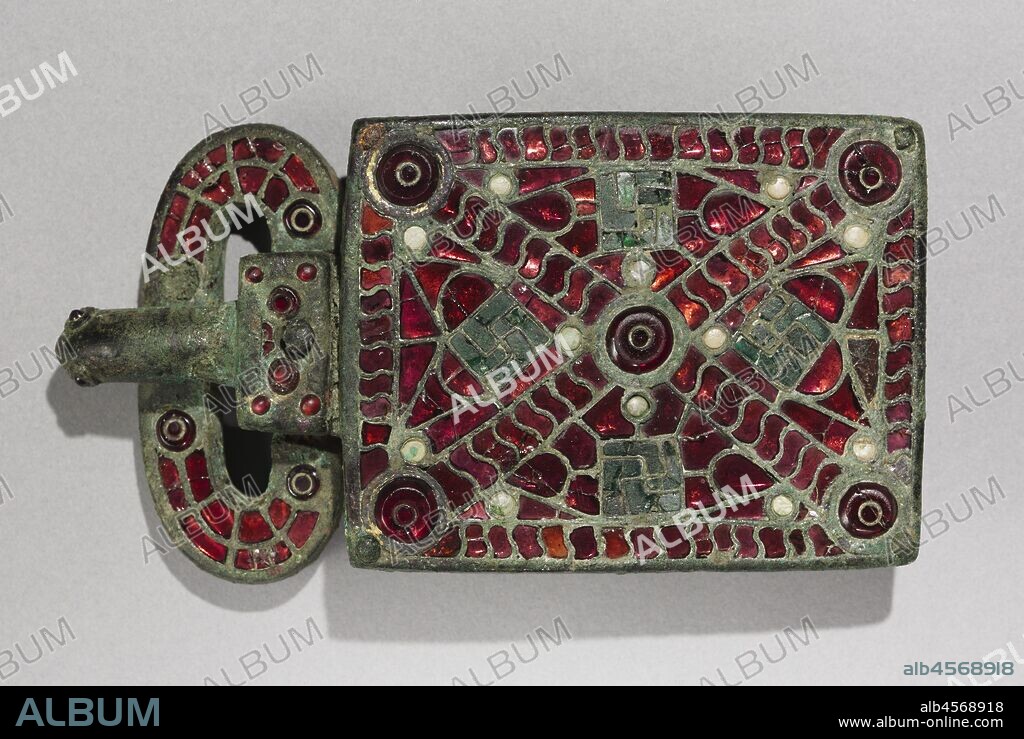alb4568918
Belt Buckle, c. 525-560. Creator: Unknown.

|
Ajouter à une autre Lightbox |
|
Ajouter à une autre Lightbox |



Avez-vous déjà un compte? S'identifier
Vous n'avez pas de compte ? S'inscrire
Acheter cette image

Titre:
Belt Buckle, c. 525-560. Creator: Unknown.
Légende:
Voir la traduction automatique
Belt Buckle, c. 525-560. The art of the European Migration Period (3rd-7th centuries AD) is almost exclusively one of personal adornment-a portable art that followed men and women to their graves. Belt buckles with large rectangular attachment plates have been discovered in cemeteries across the Iberian Peninsula-now occupied by Spain and Portugal-from the period of Visigothic occupation (about AD 412-711). Their decoration varies. Finer examples, like this one, are distinguished by brilliantly inlaid semi-precious stones and coloured glass. Garnets were especially prized in Visigothic society for use in cloisonné jewelry. The technique involved the fitting of carefully cut pieces of polished garnet into an intricate grid of compartments, or cloisons. This buckle is so densely inlaid with garnets that it presents a virtual "carpet" of red to the eye. These large Visigothic buckles are strikingly uniform in shape yet endlessly varied in surface design, perhaps a sign that they expressed the personal identities of their original owners. Grave excavations have shown that belt buckles of this type were made for women.
Personnalités:
Crédit:
Album / Heritage Art/Heritage Images
Autorisations:
Modèle: Non - Propriété: Non
Questions sur les droits?
Questions sur les droits?
Taille de l'image:
4958 x 3321 px | 47.1 MB
Taille d'impression:
42.0 x 28.1 cm | 16.5 x 11.1 in (300 dpi)
Mots clés:
 Pinterest
Pinterest Twitter
Twitter Facebook
Facebook Copier le lien
Copier le lien Email
Email
